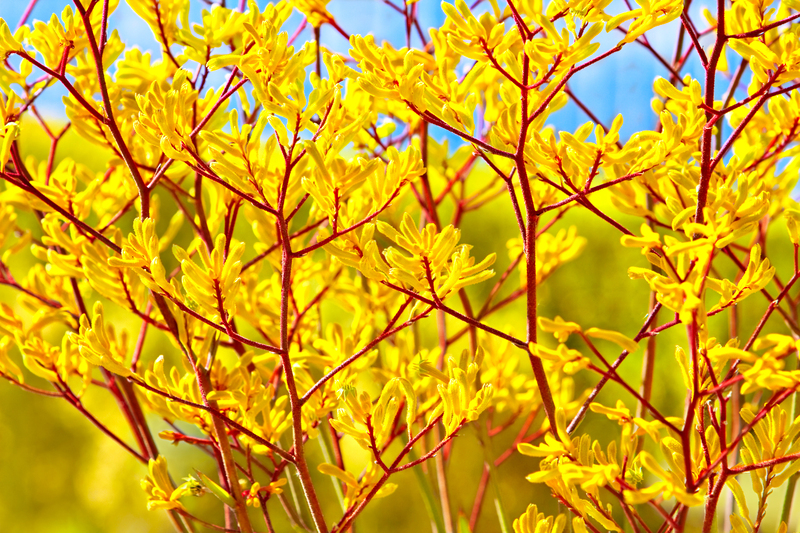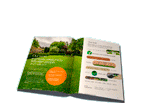Guidelines for Autumnal Hedge Pruning
Posted on 04/05/2025
Guidelines for Autumnal Hedge Pruning
The advent of autumn brings a spectrum of responsibilities for gardeners, and one of the most significant tasks is the pruning of hedges. Properly trimmed hedges not only enhance the aesthetics of your garden but also ensure that your plants remain healthy and vibrant in the long run. This comprehensive guide delves into the intricacies of autumnal hedge pruning, offering practical advice and expert tips to make your gardening experience both enjoyable and effective.

Understanding the Importance of Hedge Pruning
Hedge pruning is a critical aspect of garden maintenance. Hedges can quickly become overgrown, unruly, and susceptible to diseases if not attended to meticulously. Autumn is the ideal season for pruning as the plants are transitioning into a dormant phase, which makes them less vulnerable to stress and damage. By pruning in the autumn, you prepare your hedges for the harsh winter months while setting the stage for robust growth in the spring.
Types of Hedges and Pruning Techniques
Different types of hedges require distinct pruning techniques. Evergreen and deciduous hedges, for instance, demand varied approaches. Understanding the specific needs of your hedge can significantly influence the success of your pruning efforts.
Evergreen Hedges
Evergreen hedges such as yew, holly, and privet retain their foliage year-round, offering continuous privacy and beauty. For these types, light pruning in late summer to early autumn is recommended. This encourages the growth of new shoots before the winter dormancy.
Deciduous Hedges
Deciduous hedges like beech, hawthorn, and hornbeam shed their leaves in the winter. For these, more substantial pruning can be done in late autumn once the leaves have fallen. This helps in maintaining their shape throughout the dormant season.
Tools and Equipment for Pruning
Equipping yourself with the right tools is essential for effective hedge pruning. Here are some of the most useful tools:
Hedge Trimmers
Electric or gas-powered hedge trimmers are ideal for large hedges. They provide a clean cut and can cover a lot of ground quickly. For smaller hedges, handheld shears might be more appropriate.
Pruning Shears
These are essential for detailed work and for cutting thicker branches that trimmers cannot handle. There are two main types: bypass and anvil pruners. Bypass pruners are generally preferred for live branches, while anvil pruners are better suited for dead or dried wood.
Safety Gear
Wearing safety gear such as gloves, eye protection, and sturdy footwear is of paramount importance. This ensures that you are protected from sharp branches, debris, and the tools themselves.
Step-by-Step Guide to Autumnal Hedge Pruning
1. Assess Your Hedge
Begin by assessing the condition of your hedge. Look for dead, diseased, or damaged branches that need removal. Identify areas that have overgrown and require trimming.
2. Plan Your Cuts
Decide on the shape and height you want to maintain. For formal hedges, a level top and straight sides are typical, while informal hedges can have a more natural appearance. Use stakes and string to guide straight cuts if necessary.
3. Begin Pruning
Start pruning from the bottom and work your way up. This ensures that lower branches receive adequate sunlight. When making cuts, angle them slightly to prevent water from settling and causing rot. Remove dead and diseased wood first, followed by overgrown branches.
4. Shape the Hedge
For formal hedges, keep the top slightly narrower than the base to allow light to reach all parts of the hedge. This is known as "trapezoidal shape" and is crucial for maintaining a healthy, full hedge.
5. Clean Up
After pruning, collect all the cut branches and leaves. Composting them is a great way to recycle the nutrients back into your garden. Clean your tools to prevent spreading diseases in future pruning sessions.
Common Mistakes to Avoid
While hedge pruning may seem straightforward, several common mistakes can undermine your efforts.
Over-Pruning
Excessive pruning can stress your plants, making them vulnerable to diseases and winter damage. Prune only as much as necessary to maintain the desired shape and health of the hedge.
Ignoring the Base
Failure to trim the base adequately can lead to a dense top and a sparse, weak base. This imbalance can compromise the hedge's structural integrity.
Using Dull Tools
Dull blades can cause jagged cuts, which take longer to heal and are more prone to diseases. Always ensure your tools are sharp and in good condition.

Post-Pruning Care
Taking care of your hedges post-pruning is just as important as the pruning itself.
Watering
While the frequency of watering during autumn may decrease due to lower temperatures, it is still essential to ensure your hedges are adequately hydrated. Newly pruned hedges, in particular, need sufficient water to recover.
Mulching
Applying a layer of mulch around the base of your hedges can help retain moisture and regulate soil temperature. It also prevents weed growth, which can compete with your hedges for nutrients.
Inspect Regularly
Regularly inspect your hedges for signs of disease or pests. Early detection and treatment can prevent more severe problems down the line.
Final Thoughts
Autumnal hedge pruning is a vital task that requires a blend of knowledge, the right tools, and careful execution. By understanding the types of hedges you are working with, employing proper techniques, and avoiding common mistakes, you can ensure that your garden remains healthy and beautiful throughout the year. Remember, well-pruned hedges not only elevate the visual appeal of your garden but also contribute significantly to the overall health of your plants. Happy pruning!






 Certified and experienced landscapers
Certified and experienced landscapers



 Get a Quote
Get a Quote